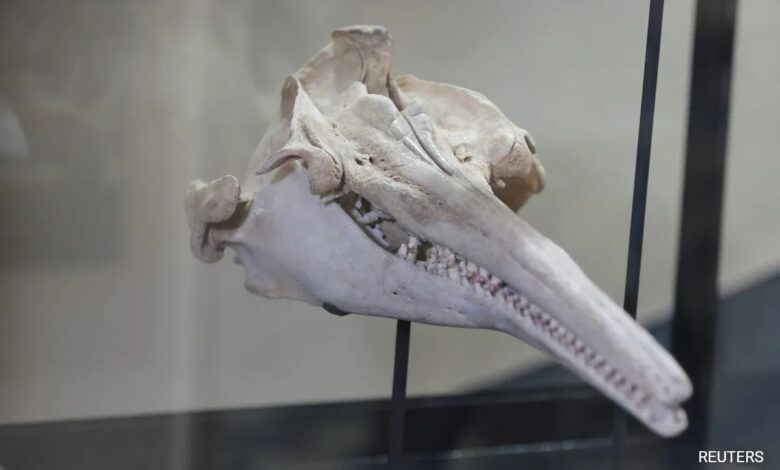
Peruvian and foreign paleontologists have presented the skull of a giant dolphin that lived 16 million years ago in the rivers of the Amazon of Peru.
“We were lucky to find the almost complete skull of an Amazonian dolphin that lived 16 million years ago in this region,” paleontologist Rodolfo Salas-Gismondi, from the Museum of Natural History of the National University of San Marcos, told AFP. in Lima.
Salas pointed out that the discovery occurred in 2018 on the banks of the Napo River, in the Loreto region, but the confirmation of the antiquity tests was delayed due to the covid-19 pandemic.
“It is a success because it allows us to meet an animal that we did not know existed in the Amazon,” especially because it is a region where it is very difficult to search for fossils, the expert highlighted.
The discovery was published this Wednesday in the American scientific journal Science Advances. According to the Peruvian researcher, it is a giant dolphin, whose length is between 3 and 3.5 meters.
The “Pebanista Yacuruna”, as its discoverers named it, had a facial crest that only Indian dolphins sport. These are bony structures on the face, used as sound barriers.
“It’s a pretty big dolphin. More than any river dolphin that has been discovered to date,” Salas explained.
Other characteristics that stand out in the fossil are the large muscular insertions in the skull for biting and the elongated snout, with many teeth.
According to Salas, “it is likely that this dolphin has had marine ancestors throughout the ocean and that they have ventured into the Amazon region and India.”
16 million years ago the Peruvian Amazon was very different from what it is today. Much of the Amazon plain was covered by a large system of lakes and swamps called Pebas, where large dolphins lived.
The Pebas system included aquatic, semi-aquatic and terrestrial ecosystems (swamps, floodplains) and extended between what are now Colombia, Ecuador, Bolivia, Peru and Brazil.
“It is a great discovery. It is a very great contribution to paleontology and very important to understand current biodiversity,” the director of the French Development Research Institute (IRD), Bruno Turcq, told AFP.
An IRD researcher was involved in the discovery.
The expedition made up of Peruvian, American and French paleontologists was sponsored by the National Geographic Society.
The first cetaceans evolved from land animals about 55 million years ago.









